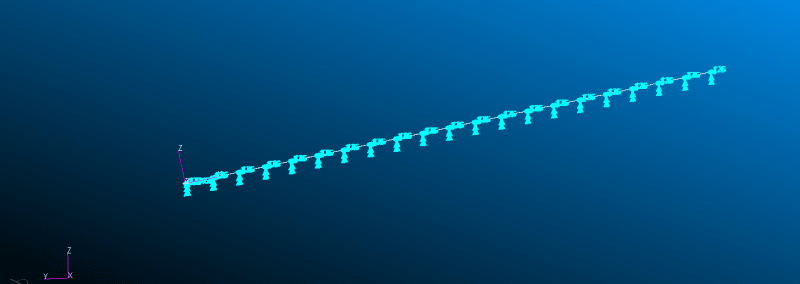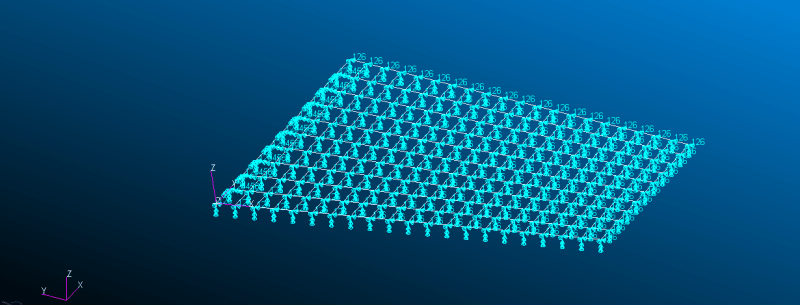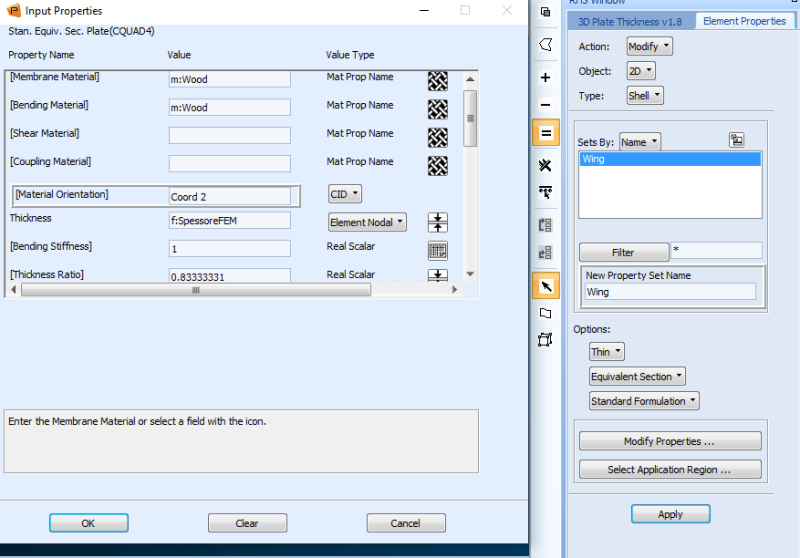Hello everyone, by performing the modal analysis of this wing model that has a dihedral angle of 10 °, in which I defined the thicknesses of each node of the mesh through a spatial field and then use a SHELL-EQUIVALENT SECTION property, I noticed a strong difference in the results compared to the 3D model. I had not encountered this problem in previous analyzes where the wing did not have a dihedral angle.
When I speak of diversity in the results I mean that the frequencies of the first 4 modes of vibrations go from having values of 20Hz-50Hz-80Hz (modal analysis with 3D model) to values of 180 Hz-350Hz-500Hz (modal analysis with 2D model).
I have already used this method in other analyses with wings of the same geometry (but without dihedral angle) and material, obtaining excellent results compared to 3D.
I am sure that the analysis with the 3D model is right because the values of the modal frequencies are close to those obtained previously for the same wing without dihedral angle.
The wing in question is made of Mahogany (2D orthotropic material).
Could it be that this type of method has problems when the plate does not lie on the XY plane?
In image 1: you can see the dihedral angle imposed
In image 2: you can see the plate (i.e. the wing)
In image 3: using the display shell thickness I show you the real geometry
In image 4: the settings used in the SHELL-EQUIVALENT SECTION property




When I speak of diversity in the results I mean that the frequencies of the first 4 modes of vibrations go from having values of 20Hz-50Hz-80Hz (modal analysis with 3D model) to values of 180 Hz-350Hz-500Hz (modal analysis with 2D model).
I have already used this method in other analyses with wings of the same geometry (but without dihedral angle) and material, obtaining excellent results compared to 3D.
I am sure that the analysis with the 3D model is right because the values of the modal frequencies are close to those obtained previously for the same wing without dihedral angle.
The wing in question is made of Mahogany (2D orthotropic material).
Could it be that this type of method has problems when the plate does not lie on the XY plane?
In image 1: you can see the dihedral angle imposed
In image 2: you can see the plate (i.e. the wing)
In image 3: using the display shell thickness I show you the real geometry
In image 4: the settings used in the SHELL-EQUIVALENT SECTION property




